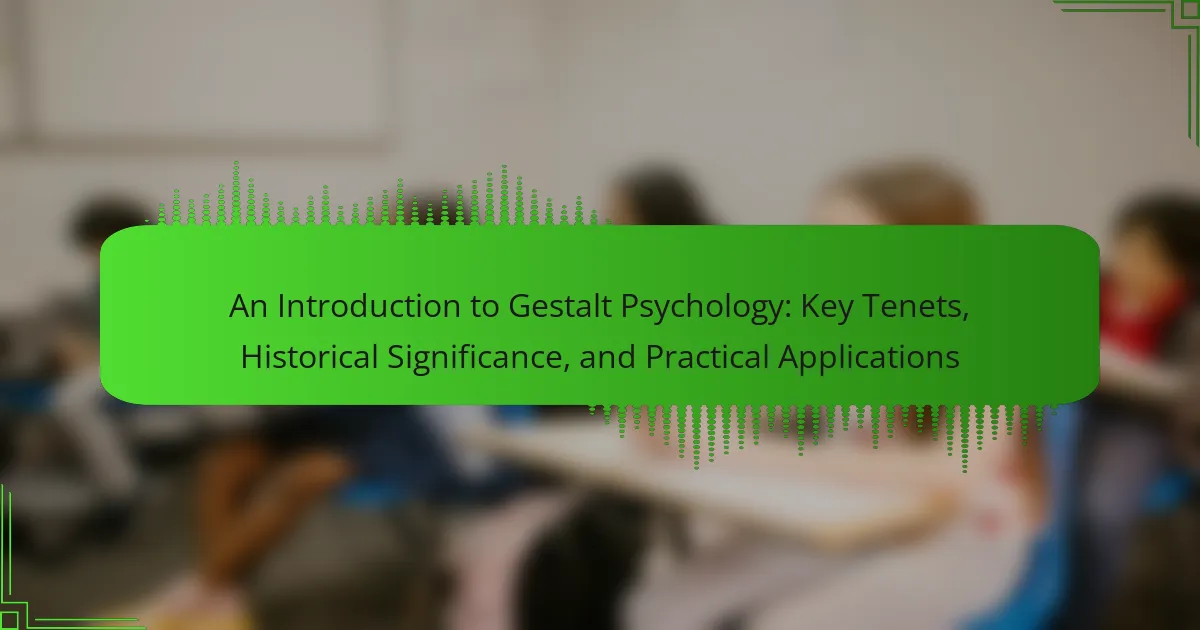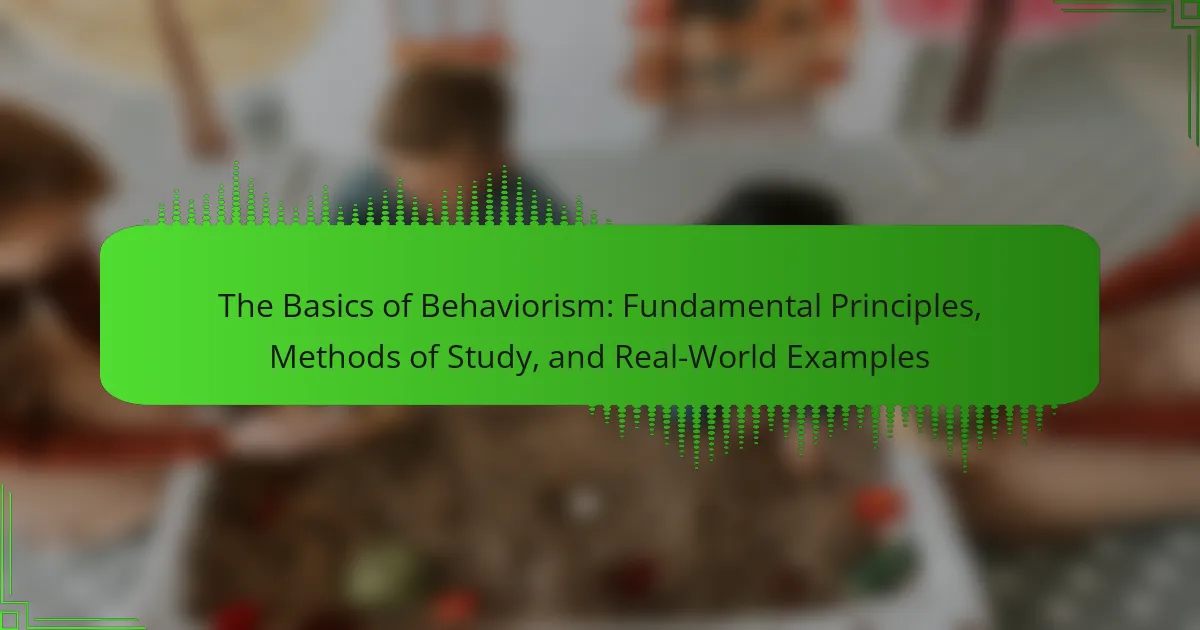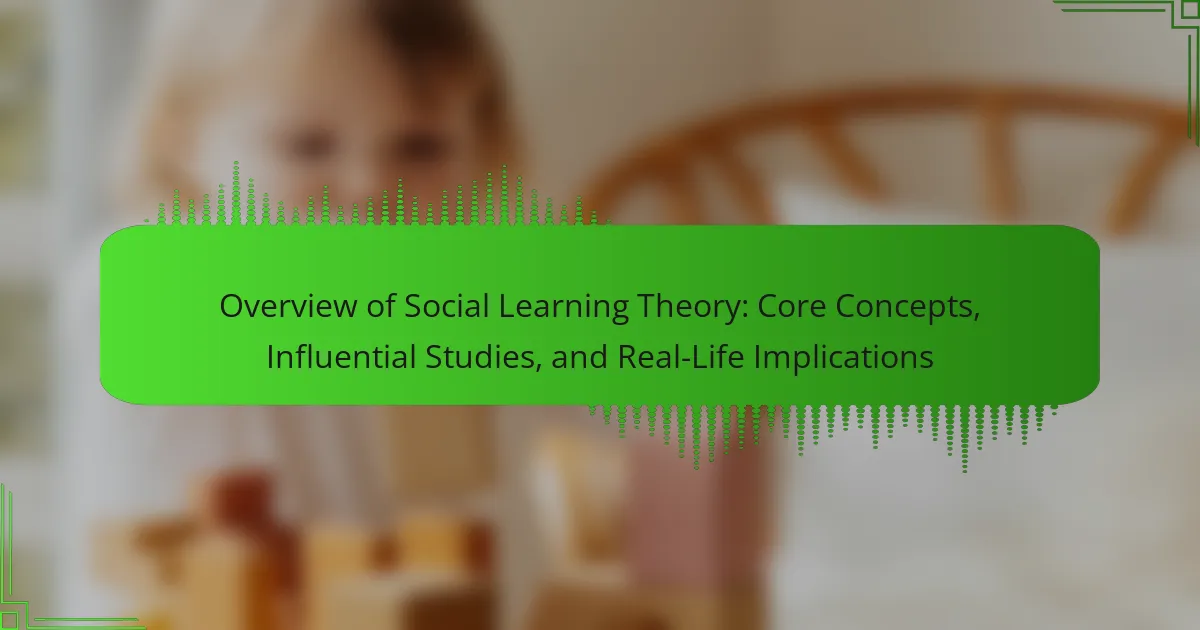Gestalt psychology is a theoretical framework that focuses on how the mind organizes sensory experiences into holistic perceptions. Developed in the early 20th century by psychologists such as Max Wertheimer, Wolfgang Köhler, and Kurt Koffka, this approach contrasts with reductionist perspectives by emphasizing the significance of context and patterns in perception. Key principles of Gestalt psychology include figure-ground organization, similarity, proximity, and closure, which illustrate how individuals perceive their environment. The article explores the foundational concepts of Gestalt psychology, its historical significance, and its practical applications across various fields, including cognitive psychology and design.

What is Gestalt Psychology?
Gestalt psychology is a theoretical framework in psychology that emphasizes the holistic nature of perception. It posits that the mind organizes sensory experiences into meaningful wholes. This approach contrasts with reductionist views that analyze components in isolation. Founded in the early 20th century by figures like Max Wertheimer, Wolfgang Köhler, and Kurt Koffka, Gestalt psychology emerged in response to behaviorism. Key principles include figure-ground organization, similarity, proximity, and closure. These principles illustrate how people perceive patterns and structures in their environment. Gestalt psychology has influenced various fields, including cognitive psychology and design, by highlighting the importance of context in perception.
How did Gestalt Psychology emerge as a significant field?
Gestalt Psychology emerged as a significant field in the early 20th century. It was founded by German psychologists Max Wertheimer, Kurt Koffka, and Wolfgang Köhler. These psychologists challenged the reductionist approach of behaviorism and structuralism. They emphasized understanding the mind as a whole rather than breaking it down into parts. Their work focused on perception and how humans organize sensory information. The principles of Gestalt Psychology, such as figure-ground organization and closure, became influential in various disciplines. Research demonstrated that humans perceive patterns and structures in a holistic manner. This approach laid the groundwork for modern cognitive psychology and influenced fields like design and education.
What were the foundational ideas proposed by early Gestalt psychologists?
Early Gestalt psychologists proposed that perception is a holistic process. They emphasized that the mind organizes sensory input into meaningful wholes. This principle is known as “the whole is greater than the sum of its parts.” They argued that humans perceive objects as organized patterns rather than isolated components. This approach challenged the reductionist perspective of behaviorism. Key figures like Max Wertheimer, Kurt Koffka, and Wolfgang Köhler were instrumental in this development. Their work highlighted principles such as figure-ground organization and similarity. These foundational ideas laid the groundwork for modern cognitive psychology.
How does Gestalt Psychology differ from other psychological approaches?
Gestalt Psychology emphasizes holistic perception, differing from reductionist approaches. It posits that the mind perceives entire structures rather than individual components. This contrasts with behaviorism, which focuses on observable behaviors, and psychoanalysis, which emphasizes unconscious processes. Gestalt theorists, like Max Wertheimer, believed that “the whole is greater than the sum of its parts.” Their principles, such as figure-ground organization and closure, illustrate how people interpret visual stimuli. These principles are not addressed in many traditional psychological frameworks. Thus, Gestalt Psychology provides a unique perspective on human perception and cognition.
What are the key tenets of Gestalt Psychology?
The key tenets of Gestalt Psychology include the principles of organization, perception, and holistic processing. Gestalt Psychology emphasizes that the whole is greater than the sum of its parts. This means that individuals perceive entire structures rather than just individual components. Key principles include figure-ground distinction, which helps in identifying objects from their backgrounds. Another principle is proximity, where elements close together are perceived as a group. Similarity is also a core tenet, indicating that similar items are grouped together in perception. Continuity suggests that lines are perceived as following the smoothest path. Closure refers to the mind’s tendency to fill in gaps to create a complete image. These tenets illustrate how humans interpret visual stimuli and understand their environment holistically.
What principles define the Gestalt approach to perception?
The Gestalt approach to perception is defined by several key principles. These principles include figure-ground organization, similarity, proximity, closure, and continuity. Figure-ground organization refers to the ability to distinguish an object from its background. Similarity involves grouping elements that are alike in some way. Proximity pertains to the tendency to perceive objects that are close together as a group. Closure is the principle that suggests people tend to fill in gaps to create a complete image. Continuity refers to the preference for smooth, continuous patterns rather than abrupt changes. These principles were established by Gestalt psychologists in the early 20th century, highlighting how humans naturally organize visual information into meaningful wholes.
How do the concepts of figure-ground and closure play a role in Gestalt Psychology?
Figure-ground and closure are fundamental concepts in Gestalt Psychology. Figure-ground refers to the ability to distinguish an object (the figure) from its background (the ground). This distinction helps individuals perceive visual scenes more clearly. Closure is the tendency to perceive incomplete shapes as complete. This allows the mind to fill in gaps in visual information. Both concepts illustrate how humans organize sensory input into meaningful patterns. They demonstrate that perception is not merely a sum of sensory data. Instead, it involves active interpretation by the brain. Research shows that these principles are essential for understanding visual perception. They influence various fields, including design and cognitive psychology.
Why is the historical significance of Gestalt Psychology important?
The historical significance of Gestalt Psychology is important because it revolutionized the understanding of perception and cognition. Founded in the early 20th century, Gestalt Psychology emphasized that the mind organizes sensory information into meaningful wholes. This approach challenged the reductionist views dominant in psychology at the time, which focused on breaking down mental processes into smaller components. Key figures like Max Wertheimer, Wolfgang Köhler, and Kurt Koffka contributed foundational theories, such as the principles of figure-ground organization and perceptual grouping. Their work laid the groundwork for future psychological research and influenced various fields, including cognitive psychology and visual arts. The Gestalt perspective remains relevant today, informing modern theories of perception and problem-solving.
What impact did Gestalt Psychology have on modern psychology?
Gestalt Psychology significantly influenced modern psychology by emphasizing the holistic processing of perception. It introduced the idea that the mind organizes sensory information into meaningful wholes. This contrasts with earlier approaches that focused on individual elements. The principles of Gestalt Psychology, such as figure-ground perception and closure, laid the groundwork for cognitive psychology. Cognitive psychology examines how people understand and interpret their experiences. Gestalt theories also impacted therapeutic practices, particularly in Gestalt therapy, which focuses on awareness and personal responsibility. The emphasis on context in perception has shaped research in areas like visual perception and social psychology. Overall, Gestalt Psychology’s legacy is evident in various psychological domains today.
How did historical events influence the development of Gestalt theories?
Historical events significantly influenced the development of Gestalt theories. The rise of psychology as a discipline in the early 20th century set the stage for Gestalt principles. World War I prompted a need for understanding human perception and behavior. This context fostered the exploration of holistic approaches to psychology. The work of German psychologists Max Wertheimer, Kurt Koffka, and Wolfgang Köhler was pivotal. They emphasized perception as a whole rather than as isolated parts. Their research on phenomena like the phi phenomenon illustrated these ideas. Additionally, the socio-political climate in Europe encouraged innovative psychological theories. These factors collectively shaped Gestalt psychology’s foundational concepts.
What practical applications can be derived from Gestalt Psychology?
Gestalt Psychology has several practical applications in various fields. In education, it promotes holistic learning by emphasizing the importance of understanding the whole concept rather than isolated parts. In therapy, Gestalt techniques facilitate self-awareness and personal growth by focusing on present experiences and emotions. In design, Gestalt principles guide the creation of user-friendly interfaces by ensuring that elements are perceived as unified wholes. In marketing, it helps in crafting effective advertisements that capture attention through visual organization. Research has shown that applying these principles enhances user experience and cognitive processing, leading to better engagement and understanding.
How is Gestalt Psychology applied in therapeutic settings?
Gestalt Psychology is applied in therapeutic settings through techniques that emphasize awareness and personal responsibility. Therapists encourage clients to focus on their present experiences. This approach promotes self-discovery and understanding of emotions. Techniques such as the empty chair method facilitate dialogue with different aspects of the self. Role-playing exercises help clients explore relationships and unresolved conflicts. Gestalt therapy also emphasizes the importance of the therapist-client relationship. This relationship serves as a model for interpersonal interactions. Research shows that this approach can lead to significant emotional and behavioral changes in clients. Studies indicate that clients often report increased self-awareness and improved coping skills after Gestalt therapy sessions.
What role does Gestalt Psychology play in education and learning environments?
Gestalt Psychology plays a significant role in education and learning environments by emphasizing holistic understanding. It asserts that learners perceive entire patterns rather than isolated components. This perspective encourages educators to present information in a way that highlights connections and relationships. For instance, teaching concepts through integrated themes can enhance comprehension. Research indicates that students retain information better when it is contextualized. Gestalt principles, such as figure-ground organization, can be applied to design effective learning materials. These principles help in structuring lessons that facilitate meaningful learning experiences. Overall, Gestalt Psychology informs teaching strategies that promote deeper understanding and engagement.
How can understanding Gestalt Psychology enhance everyday experiences?
Understanding Gestalt Psychology can enhance everyday experiences by promoting holistic perception and improving problem-solving skills. This psychological approach emphasizes that the whole is greater than the sum of its parts. By applying Gestalt principles, individuals can better recognize patterns and relationships in their environment. For instance, the principle of figure-ground distinction helps in focusing on relevant information while ignoring distractions. Additionally, the concept of closure aids in completing incomplete images, which can enhance creativity. Research shows that applying Gestalt techniques can lead to more effective communication and collaboration. Overall, understanding Gestalt Psychology fosters a more integrated and insightful approach to daily interactions and challenges.
What strategies can individuals use to apply Gestalt principles in daily life?
Individuals can apply Gestalt principles in daily life by utilizing strategies such as grouping, proximity, and closure. Grouping involves organizing items into categories based on shared characteristics. For example, arranging books by genre helps in understanding and accessing them easily. Proximity refers to placing related items close together to enhance perception. This can be seen in workspace organization, where similar tools are kept nearby for efficiency. Closure is the ability to perceive incomplete shapes as whole. This principle can be applied in art and design, where incomplete figures are interpreted as complete images. These strategies help individuals enhance their understanding and interaction with their environment.
How can awareness of Gestalt concepts improve interpersonal communication?
Awareness of Gestalt concepts can significantly enhance interpersonal communication. Gestalt psychology emphasizes the whole experience rather than individual parts. This perspective encourages individuals to consider context and relationships in interactions. By recognizing patterns and holistic perceptions, communicators can better understand each other’s viewpoints. Improved empathy arises as individuals appreciate the interconnectedness of thoughts and feelings. Additionally, awareness of Gestalt principles, such as figure-ground relationships, helps clarify messages. Clearer communication reduces misunderstandings and fosters stronger connections. Research indicates that effective communication improves relationship satisfaction and conflict resolution. Therefore, applying Gestalt concepts can lead to more meaningful interactions.
Gestalt psychology is a theoretical framework that emphasizes the holistic nature of perception, asserting that the mind organizes sensory experiences into meaningful wholes. Founded in the early 20th century by psychologists such as Max Wertheimer, Wolfgang Köhler, and Kurt Koffka, it emerged as a response to reductionist approaches like behaviorism. Key principles include figure-ground organization, similarity, proximity, and closure, which illustrate how individuals perceive patterns and structures in their environment. The historical significance of Gestalt psychology lies in its influence on modern cognitive psychology, education, and therapeutic practices, highlighting the importance of context in perception and understanding human behavior. Practical applications of Gestalt principles can enhance learning, communication, and design across various domains.



